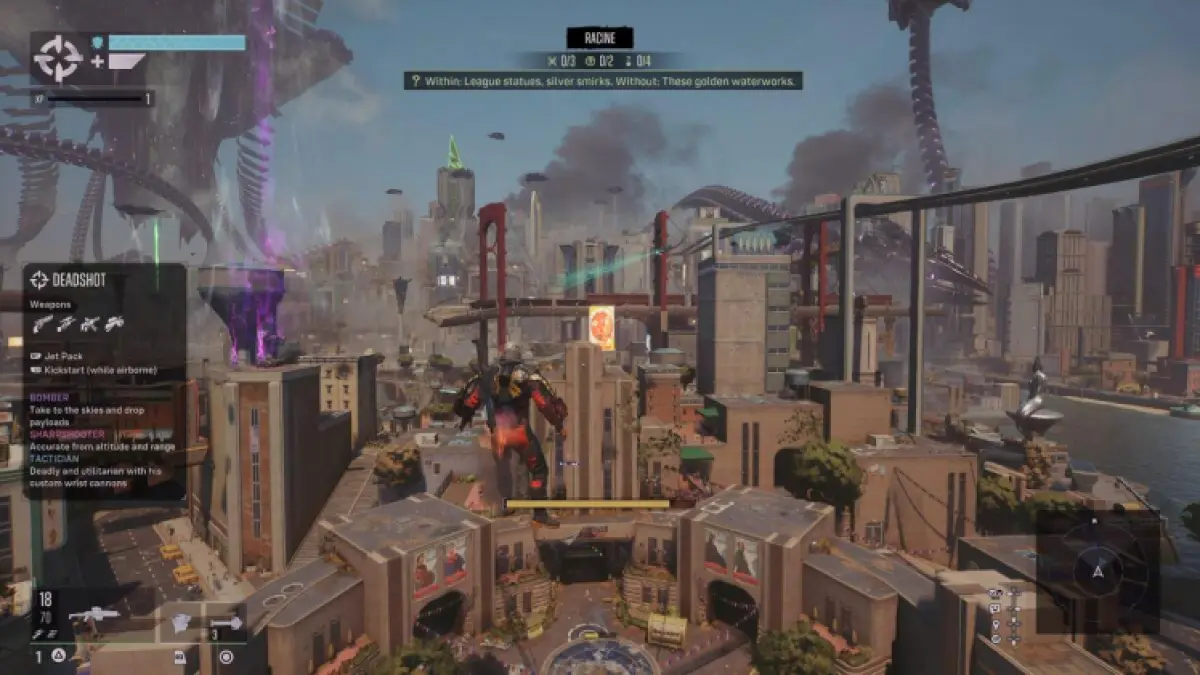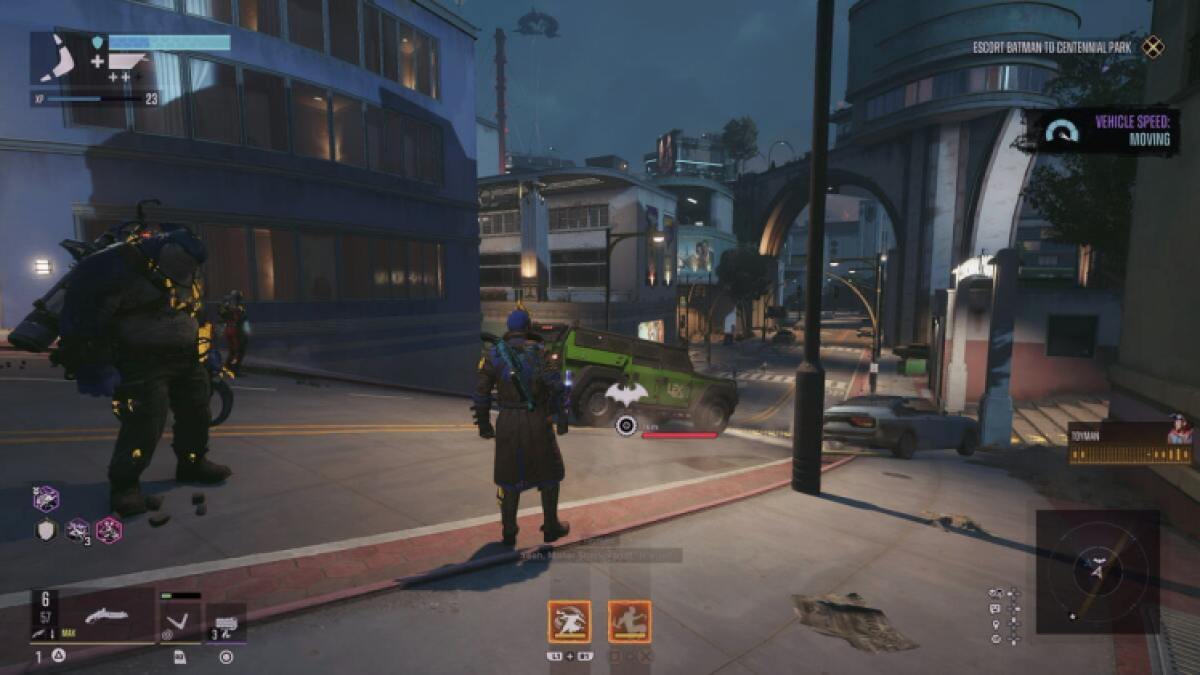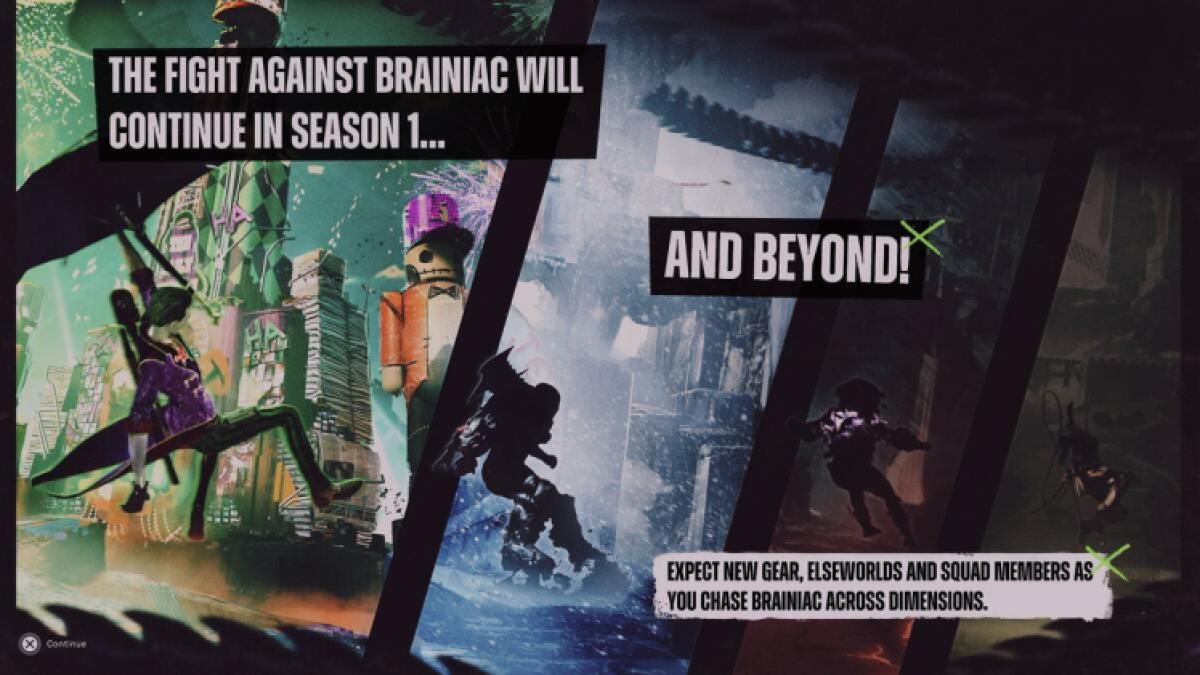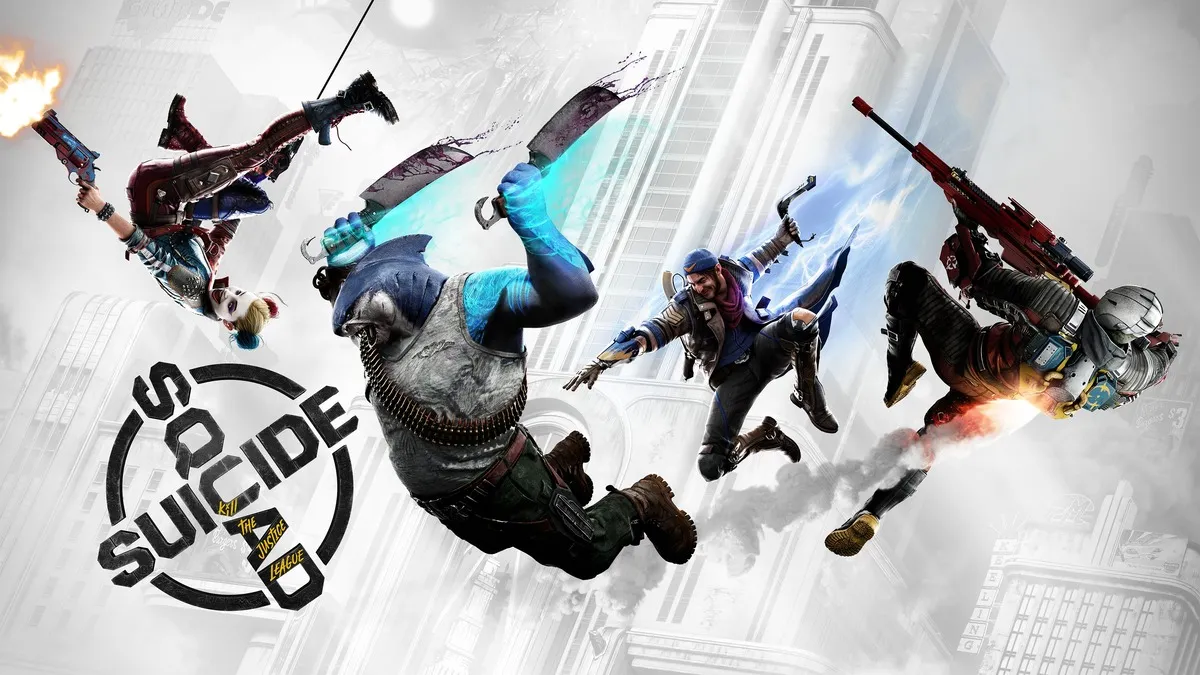Listen, I know you’ve probably only heard negative things about Suicide Squad: Kill the Justice League, but hear me out.
If you go into Suicide Squad: Kill the Justice League expecting to play an Arkham game, you’ll be disappointed. This is a new Rocksteady Studios — the Rocksteady Studios team that made the Arkham games isn’t here anymore. If you go into Suicide Squad: Kill the Justice League with an open mind, a thirst for high-velocity looting and shooting, and a love for the DC Universe, you’ll likely enjoy the ride.
Suicide Squad: Kill the Justice League is full of surprises. The combat on paper is repetitive, but the action-packed mayhem is somehow continually pulling me in (even after 20 hours) instead of growing stale. The characters, against all odds, are brimming with charm and laugh-out-loud lines. Even the live service elements have caught me off guard by being extremely kind and generous. It’s not a perfect game, but it’s one that I’m shocked is good in ways that far outweigh the negatives.
Related: How Long Does Suicide Squad Kill the Justice League Take to Beat? All Main Missions List
What is Suicide Squad: Kill the Justice League?

To help you grasp what Suicide Squad: Kill the Justice League is, think of it as if Infamous and Borderlands had a baby. The minute-to-minute gameplay and world design remind me of Infamous and the character classes and buildcrafting, humor, and grind for better gear remind me of Borderlands (but the humor is a lot better, I promise).
What makes Suicide Squad: Kill the Justice League unique is it’s a live service game. We do get a full game at launch with an enjoyable campaign that clocks in at around 10 to 15 hours, but the full story Rocksteady Studios wants to tell is gated behind seasons, which are all free. Of course, there are the typical live service trappings: cosmetics to buy, battle passes to grind through, and seasons with new playable characters, maps, gear, and stories. Since you need to purchase it up front instead of being free like many other live service games, Suicide Squad: Kill the Justice League rides a line between being a full AAA experience and a game that wants you coming back for more (and hopefully spending more money).
I see the core of Suicide Squad: Kill the Justice League as a 30-hour experience with a surprisingly good campaign, purposeful side missions, and a cogent endgame. You’ll get the mileage you want from it, put it down, and come back when a new season rolls around. And that’s perfectly fine by me.
Squad goals – The characters, gameplay, and animation

Harley Quinn, Captain Boomerang, Deadshot, and King Shark are the heart and soul of Suicide Squad: Kill the Justice League. Not only does each character’s kit offer a new, exciting way to play, but their individual quirks drive my desire to keep playing.
Suicide Squad: Kill the Justice League absolutely nails the band of misfits vibe that we’ve come to expect from Suicide Squad. It’s this spot-on tone that carries when the gameplay gets bland. Their personalities shine in some of the best cutscene animations I’ve ever seen. Whether it’s Harley Quinn’s chaotic smile when a huge explosion happens, Boomerang’s sneer when he tells a dad joke, or King Shark’s wholesome smile when he’s ignorant of what’s going on, each character’s microexpressions add loads of life into the Squad. The cinematic team at Rocksteady Studios really cooked for this game.
Related: Best Suicide Squad: Kill the Justice League character, ranked
Though you’ll inevitably choose a character or two to main, every character is fun to use. Their different playstyles aren’t as stark as true RPG shooters like Overwatch, but the things that do change, AKA what guns you use to shoot the enemies and how you traverse the world, are key pillars of this game. If you want to play more vertically, switch to Deadshot. Want to tear through every enemy as a bowling ball with a fin? Pick up King Shark. I love playing Captain Boomerang because of how his snappy teleportation powers allow me to vanish from a group of enemies and reappear dozens of feet in the air above goons thinking they’re safe behind a shield. The best part is that you can switch seamlessly between the characters, and you should with incentives like Squad members being Psyched Up for a mission, granting extra XP and damage.

Does the gameplay get repetitive? Yes, but the smoothness of the combat makes up for it. The enemy variety is good, requiring you to use different takedown tactics like countering, meleeing, or using grenades, but it’s not amazing. While the weapons change slightly between characters, the gunplay plays the exact same; it’s the traversal, special moves, and buildcrafting that make maining a character enjoyable. By nature of it being a live service game, Suicide Squad: Kill the Justice League’s missions, contracts, and general to-dos are repetitive. It takes some time to get used to — I didn’t click with it for about an hour or two into the game — and it can be overwhelming with all the information on the screen if you don’t have the best HUD customization, but once you’ve found your groove, it’s a great time. The more I play Suicide Squad: Kill the Justice League, the more I like it.
Is Suicide Squad: Kill the Justice League good? – The story, missions, boss fights, and open world

The story of Suicide Squad: Kill the Justice League is satisfying if a bit rushed at the end. In the beginning, you feel like you’re in the driver’s seat as you get introduced to the four main mercs and how they’ll go about killing the Justice League. At the middle mark, specifically after defeating Green Lantern, it feels like you take a back seat as the story happens to you instead of with you. It doesn’t ramp up in a way that feels natural or earned which makes for a weird aftertaste for a so-far delicious meal.
My opinion on the missions is similarly split. How side missions are handled is incredibly smart and rewarding, but there are a handful that are terribly boring. Side missions, or Support Squad Missions, are treated almost like a mandatory part of the game since completing them is how you unlock new features like weapon augments or elemental afflictions. The missions are recycled, which does get dull, but they provide varying degrees of fun nonetheless. The unforgivable is that there are numerous escort missions. There are about six escort main missions in the latter half of the campaign and escort missions exist as side missions, too. They are just as monotonous and tedious as any escort mission in any video game. Escort missions need to go the way of the dinosaurs, and considering when they enter the game, it’s our first red flag that the back half of the campaign was rushed.
Related: All Riddler Trophy locations in Suicide Squad Kill the Justice League

The last feature I have complicated feelings about is the boss fights. It follows the same pattern as the plot and the missions: The boss fights start great and then turn sour. The first two bosses are epic. The last three, especially the third one which feels like that generic boss fight you’ve played in every video game ever, lack the same power. I get the final boss being what it was. It’s a way to replay all the boss fights in the endgame at higher difficulties for rarer rewards. But, it would’ve been nice to have a huge finale for the campaign. Also, if that’s the final boss fight in the next 12 seasons, then that’s gonna be a problem.
From pacing to missions to boss fights, Rocksteady Studios plays Two-Face. Up front, everything appears to be well-polished and well-executed. Near the end, it feels like they ran out of time and the quality suffered. For me, it doesn’t make the game bad, it just dampens the whole experience.
On the bright side, Metropolis, the first and only (so far) map, is stunning. Traversal is only fun when there’s an interesting playground to engage with, and Metropolis fits the brief. It’s a smaller map when compared to other open-world games, which is one hundred percent a good thing, and it’s intricately layered which provides visual and tactile stimulation. You can start a fight anywhere since enemies roam the entire city, but the missions with more noticeably man-made levels make excellent use of Metropolis’ urban variety which goes a long way to make missions feel more diverse than they actually are.
More to come – The live service and endgame

Besides Suicide Squad: Kill the Justice League not being another Arkham game, the major pain point for gamers at large is that it’s live service. I’m not a hater of live service games — I love Destiny 2, Fortnite, Apex Legends, Genshin Impact, and Diablo 4. I understand that they are greedy and predatory and that people fear the fact that the game could be there one day and gone the next. That aside, when done well, they can deliver years of entertainment instead of hours.
Suicide Squad: Kill the Justice League does live service right, regardless of its always-online fumble (which an offline mode has been confirmed to be coming soon). Here are three examples:
- Free seasonal content – After paying the entry fee, all seasonal content is free which includes a new playable character, a new map, several new missions, new bosses, new gear, and new episodic stories. That’s amazing, especially when you consider there are likely to be 12 seasons in this game’s lifespan (barring it surviving that long). The older Suicide Squad: Kill the Justice League gets, the more value you get just for paying the price of admission.
- Tiered cosmetics – Another example is there are three tiers when it comes to buying cosmetics. You could view this as a bad thing since they’re essentially making you spend more for an entire bundle, but I think it’s good to give players choice, especially when they are spending money.
- No expiration – Lastly, the battle pass and the seasons never expire. You can complete them whenever you want, unlike other games that give you limited time to enjoy and complete. Win, win, win.

I didn’t break a sweat playing through the entire Suicide Squad: Kill the Justice League campaign on the hardest difficulty. I didn’t pay too much attention to my Talents or synergies because the emphasis was less on challenge and more on fun. All of that changed in the endgame. As you chase for higher quality gear, you can up the difficulty of endgame activities to increase your chances of scoring Notorious and Infamy gear (and try to find Villain Synergies which are really spicy). After failing my first endgame mission, I went back to the Talent skill tree and rethinked my synergies. Adding difficulty and purpose behind buildcrafting and the chase for better gear to the already winning adrenaline-pumping action formula is what really hooked me on this game.
Related: Suicide Squad KTJL Season One roadmap, release date, and changes
The verdict

I am pleasantly surprised with Suicide Squad: Kill the Justice League, flaws and all. As an overall experience that will only get better with age, Suicide Squad: Kill the Justice League’s combat and traversal is addictingly slick, the characters are believable, hilarious individuals I’ve grown to love, and the campaign, while lackluster at the tail end, is a fun playthrough. It’s a game I enjoy playing and look forward to revisiting, especially when new seasons are released.
- Endearing, funny, and unique characters with gorgeous animations and diverse gameplay
- Traversal and gunplay are a blast
- Outstanding level design
- Smart live service aspects
- Escort missions
- Varying degrees of quality in boss fights and missions
- Rushed story near the end
- Repetitive by nature of being a live service game








Published: Feb 2, 2024 4:33 PM UTC